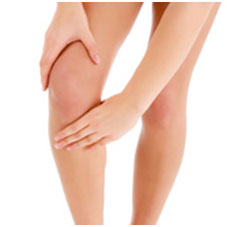Cardio-vascular illnesses
Venous thrombosis
 Venous thrombosis, also called phlebitis, is the name for a clog in a vein.
Venous thrombosis, also called phlebitis, is the name for a clog in a vein.
There is 1 case out of approximate 1 000
It can amount to 3 of 1 000 among the population with over 70 years
What is a venous thrombosis ?
Called “a superficial one” when affecting the small veins between the skin and the muscle, and “profound” when affecting a more important vein.
Situated most often of this profound phlebitis within the lower limbs (legs, thighs, the groin). The clog can being detached and then provokes a pulmonary embolism (obstruction of the pulmonary artery). Profound thrombosis needs urgently a consultation.
Which are the factors of risk ?
Obesity, cardiac insufficiency, tobacco (especially when associated to contraceptive drugs), some cancer cases (chest, abdomen, pelvis). Surgical intervention demands a particular surveillance: These factors are favouring the small vascular lesions which are a fertile ground for developing a thrombosis.
Also a pregnancy, a travel with a long plane flight can heighten the risk of getting a thrombosis.
Which are the symptoms of a venous thrombosis ?
A superficial thrombosis can cause severe pain and a reddening of the zone around, which is lasting (hardening).
Its profound form, sometimes coming with the superficial signs is associated to :
- A more widespread pain
- An inflammation
- A bluish colour of the concerned zone
- Awarming of the skin and an expansion of the superficial veins.
Therefore, an urgent consultation is needed.
Which are the treatments needed ?
For giving a diagnosis, the doctor has the choice of different exams: venous Echo-Doppler, veinography (detailed X-Ray of the zone where a clog is esteemed to be).
The treatment is based on the administration of anicoagulants (heparin, VKA).



